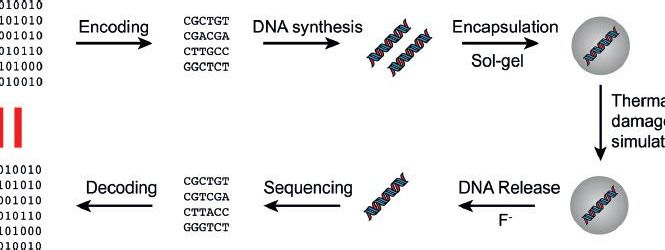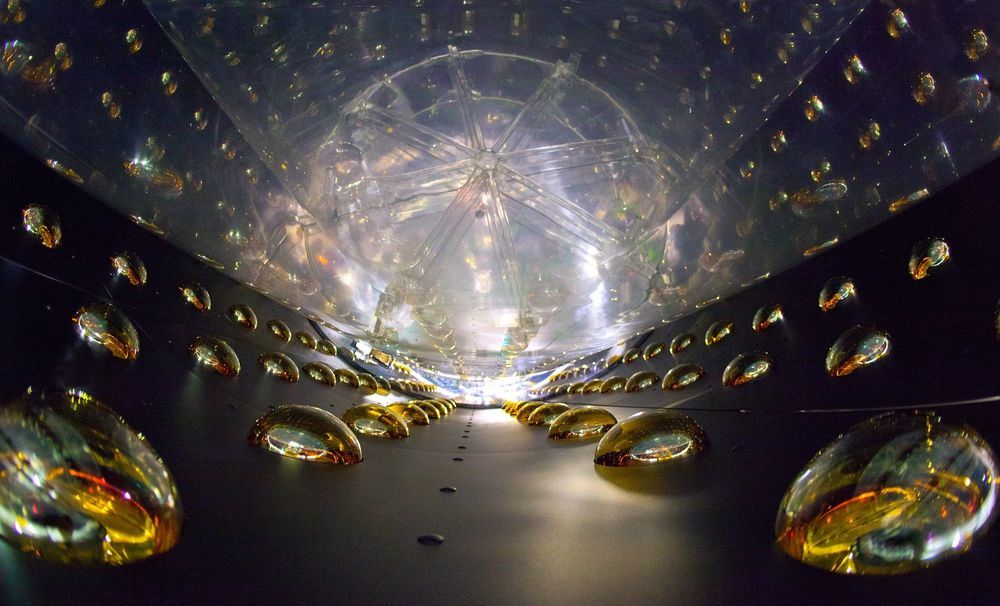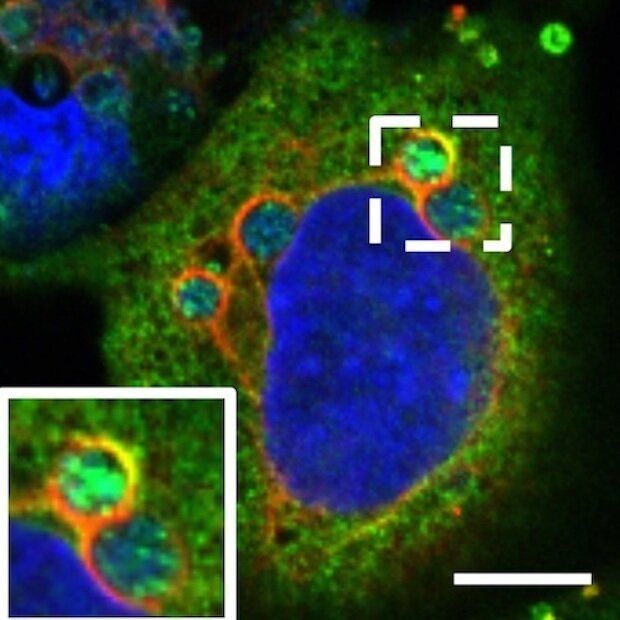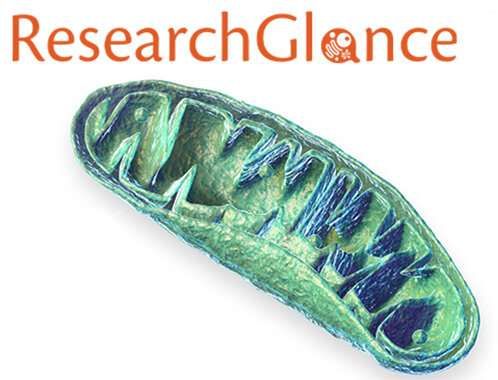Page 9074
May 31, 2019
How to store data error-free for millions of years
Posted by Quinn Sena in categories: biotech/medical, computing
Circa 2015
ETH researchers have found an error-free way to store information in the form of DNA, potentially preserving it for millions of years: encapsulate the information-bearing segments of DNA in silica (glass), using an error-correcting information-encoding scheme.
Scrolls thousands of years old provide us with a glimpse into long-forgotten cultures and the knowledge of our ancestors. In this digital era, in contrast, a large part of our knowledge is located on servers and hard drives, which may not survive 50 years, let alone thousands of years. So researchers are searching for new ways to store large volumes of data over the long term.
Continue reading “How to store data error-free for millions of years” »
May 31, 2019
The Mind-Boggling Challenge of Designing 120-Sided Dice
Posted by Quinn Sena in category: futurism
A 120-sided dice is not an original idea, says mathematician Henry Segerman. “We were just the people crazy enough to actually do it.”
May 31, 2019
Single Stage Point to Point Up To 6000 Miles With Mach 20 Starship
Posted by Quinn Sena in categories: Elon Musk, space travel

Elon Musk says adding two to four Raptor Engines to the Starship will let it go sub-orbital for 6000 miles at mach 20. This would mean trips like San Francisco to Shanghai or New York to Berlin. Many world cities are within 6000 miles of each other.
Boeing extended range 767s can reach 6000 miles and the newer 777 and 787 have longer ranges.
Continue reading “Single Stage Point to Point Up To 6000 Miles With Mach 20 Starship” »
May 31, 2019
Carnival of Space 613 – Super Alien Neutrino Communication
Posted by Quinn Sena in category: particle physics
May 31, 2019
Certain antidepressants could provide treatment for multiple infectious diseases
Posted by Quinn Sena in category: biotech/medical
Some antidepressants could potentially be used to treat a wide range of diseases caused by bacteria living within cells, according to work by researchers in the Virginia Commonwealth University School of Medicine and collaborators at other institutions.
Research published in the April print edition of the journal Life Science Alliance, shows that antidepressant drugs called FIASMAs, including desipramine, amitriptyline, and nortriptyline, halt the growth or kill four different intracellular bacterial pathogens in tissue cell culture and animal models.
“Antibiotic options for diseases caused by intracellular bacteria are limited because many of these drugs cannot penetrate our cell membranes. In essence, the bacteria are protected,” said Jason Carlyon, Ph.D., leader of the study and professor in the VCU Department of Microbiology and Immunology.
May 31, 2019
Drug-resistant cancer cells create own Achilles heel
Posted by Paul Battista in categories: biotech/medical, genetics, sustainability
The cells of most patients’ cancers are resistant to a class of drugs, called proteasome inhibitors, that should kill them. When studied in the lab, these drugs are highly effective, yet hundreds of clinical trials testing proteasome inhibitors have failed. Now scientists may have solved the mystery of these cells’ surprising hardiness. The key: Resistant cancer cells have shifted how and where they generate their energy. Using this new insight, researchers have identified a drug that resensitizes cancer cells to proteasome inhibitors and pinpointed a gene that is crucial for that susceptibility.
As cancer cells develop, they accrue multiple genetic alterations that allow the cells to quickly reproduce, spread and survive in distant parts of the body, and recruit surrounding cells and tissues to support the growing tumor. To perform these functions, cancer cells must produce high volumes of the proteins that support these processes. The increased protein production and numerous mutated proteins of cancer cells make them particularly dependent on the proteasome, which is the cell’s protein degradation machine. These huge protein complexes act as recycling machines, gobbling up unwanted proteins and dicing them into their amino acid building blocks, which can be reused for the production of other proteins.
Previously, researchers exploited cancer cells’ increased dependency on their proteasomes to develop anti-cancer therapies that inhibit the proteasomes’ function. Several distinct proteasome inhibitors have been developed, and when used in the lab, these proteasome inhibitor drugs are indeed highly effective at eradicating tumor cells. However, when administered to animal models or patients with cancer, such as multiple myeloma, proteasome inhibitors have limited efficacy and even initially vulnerable cancer cells quickly develop resistance to them. How do cancer cells so adroitly sidestep drugs that should kill them?
Continue reading “Drug-resistant cancer cells create own Achilles heel” »
May 31, 2019
Stroke study finds mouth bacteria in brain clots
Posted by Paul Battista in categories: biotech/medical, neuroscience
Using DNA evidence, scientists have shown that brain clot samples from people who have had ischemic stroke often contain mouth bacteria.
May 31, 2019
Dark Energy Could Be Hiding In The “Cosmic Void” Between Galaxies
Posted by Paul Battista in category: cosmology
May 31, 2019
Glucosepane Crosslinks and Undoing Age-Related Tissue Damage
Posted by Paul Battista in categories: biotech/medical, life extension
Photo by Erin Ashford Yale University Principal Investigator: David Spiegel Research Team: Prof. Jason Crawford, Nam Kim, Venkata Sabbasani, Matthew Streeter The long-lived collagen proteins that give structure to our arteries and other tissues are continuously exposed to blood sugar and other highly reactive molecules necessary for life. Occasionally, …Glucosepane Crosslinks and Undoing Age-Related Tissue Damage.















